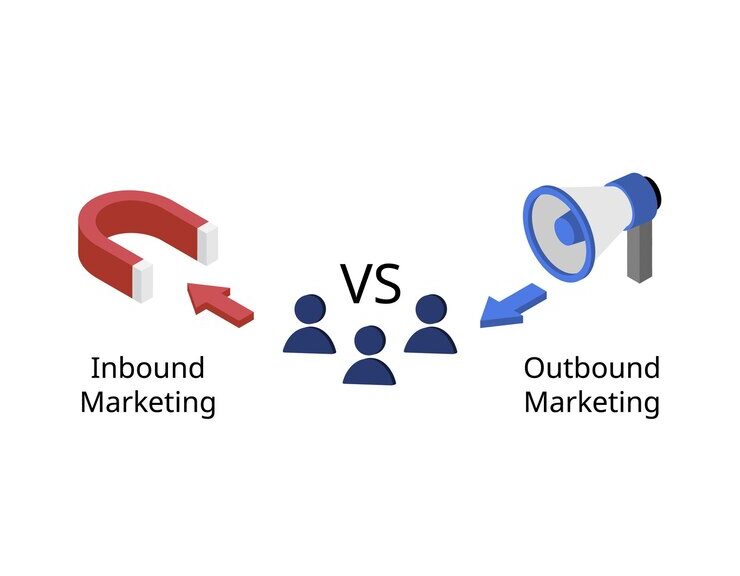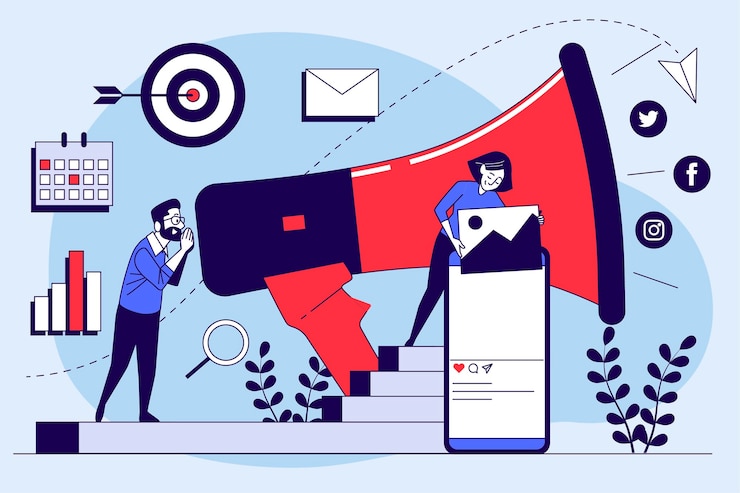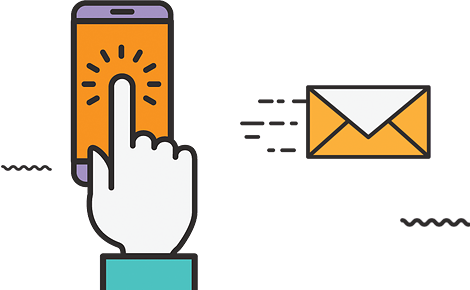
The marketing strategies for inbound and outbound need to change. Businesses no longer entirely depend on the traditional route but have employed alternative means to attract and retain customers. The big conversation largely settles between inbound marketing and outbound marketing-twin philosophies that aim to drive sales and grow businesses but contrast in execution and effectiveness.
This blog post looks at inbound marketing versus outbound marketing, the advantages and disadvantages of both methods, and how businesses-from students to startups to SMEs-can determine which one works best for them.
What is Inbound Marketing?
Inbound marketingInstead of pushing a product, it pulls potential customers in with blogs, social media, search engine optimization, and email marketing. It is a strategy that is all about drawing customers by providing valuable content and experiences that are relevant to them.

Common Inbound Tactics
- Blog content creation
- Search Engine Optimization (SEO)
- Email newsletters
- Social media engagement
- Free tools, eBooks, and guides
Benefits of Inbound Marketing
- Affordable: Perfect for startups and small-scale entrepreneurs who are working on limited budgets.
- Builds greater trust: A long-term relationship is created.
- Educational: Informs and nurtures leads through the buyer’s journey.
- Traceable: Easily measured by analytics tools into performance tracking.
Example:
An SEO-optimized blog post helps educate potential clients about the benefits of a small business’ product. These posts will eventually rank for Google and thus help with organic traffic without any further costs.
What is Outbound Marketing?
Outbound marketing is classical and therefore entails pushing its message to a large audience, whether interested or not. It includes television advertising, cold calling, direct mail, and display advertising.

Common Outbound Tactics
- TV, radio, and print ads
- Billboards and banners
- Cold calling or cold emailing
- Trade shows and exhibitions
- Paid online ads (PPC)
Benefits of Outbound Marketing
- Quick results: Immediate exposure and brand visibility.
- Scalable: Reach a large audience quickly.
- Direct: Promotes a clear call-to-action.
- Good for brand awareness: Especially for new products or launches.
Example:
A company launches a Facebook Ads campaign targeting users by location, age, and interest to generate immediate clicks and conversions.
| Factor | Inbound Marketing | Outbound Marketing |
| Audience | Attracts interested users organically | Reaches a broad audience |
| Cost | Lower long-term costs | Higher cost due to paid placements |
| Communication | Two-way (engagement focused) | One-way (broadcast style) |
| Strategy Duration | Long-term, relationship-driven | Short-term, immediate impact |
| ROI Tracking | Easy to measure with analytics | Harder to measure precisely |
| Targeting | Highly targeted through content and SEO | Broad targeting through paid reach |
Inbound vs. Outbound Marketing: Key Differences
Which is Better for Your Business?
The answer depends on your business goals, resources, and audience type. Here’s a breakdown:
Ideal for Students and Freelancers
Inbound marketing is better because:
- It requires a minimal budget.
- You can build a personal brand through blogs and LinkedIn.
- SEO and content writing are great skills to learn.
Tip from Digi Dervish: Start a blog to showcase your skills and attract freelance clients through inbound strategies.
Ideal for Small Businesses and Startups
Start with inbound marketing to build awareness affordably, then scale with outbound marketing once you have the budget.
Tip from Digi Dervish: Use social media marketing and SEO services to increase your digital footprint. We help small businesses rank locally and grow their audience.
Ideal for Corporations and Hospitals
A hybrid strategy works best. Use inbound to educate and nurture leads, while outbound creates broad awareness and instant visibility.
Tip from Digi Dervish: Combine PPC campaigns with SEO and email funnels for optimal ROI.
Common Problems Faced by Businesses
1. Limited Budget for Marketing
Solution: Focus on inbound methods like SEO and organic social media to get long-term results without recurring costs.
2. No Online Presence
Solution: Start a blog, optimize your website, and build a Google Business Profile. Digi Dervish can help set this up for you.
3. Low Engagement Rates
Solution: Create interactive content and run outbound remarketing campaigns to re-engage users.
4. Not Enough Leads
Solution: Use inbound tactics like lead magnets (free PDFs, webinars) to collect emails and nurture them through email marketing.
How Digi Dervish Can Help
At Digi Dervish, we specialize in crafting personalized digital marketing strategies that blend the best of both inbound and outbound methods. Our services include:
- SEO and content writing
- Email marketing automation
- Social media advertising
- Website development
- Data-driven PPC campaigns
Regardless of being a student, small business, or enterprises, we form strategies that account for measurable results.
The mix of inbound and outbound marketing has its effective role in a profitable business strategy. Inbound is for sustainable and long-lasting growth through trust and value, while outbound gives a quick connection of brand exposure leaving fast and instant recognition. The best approach? A combination of both—based on your goals and audience.
Let Digi Dervish help you choose the right mix and achieve your digital marketing goals effectively.
Making the decision between inbound and outbound marketing for your business? Please give Digi Dervish a call for a free consultation!



